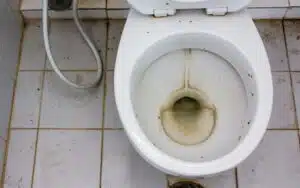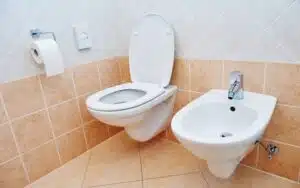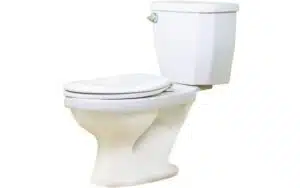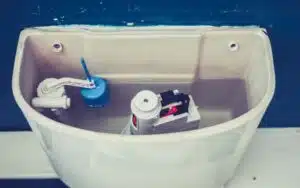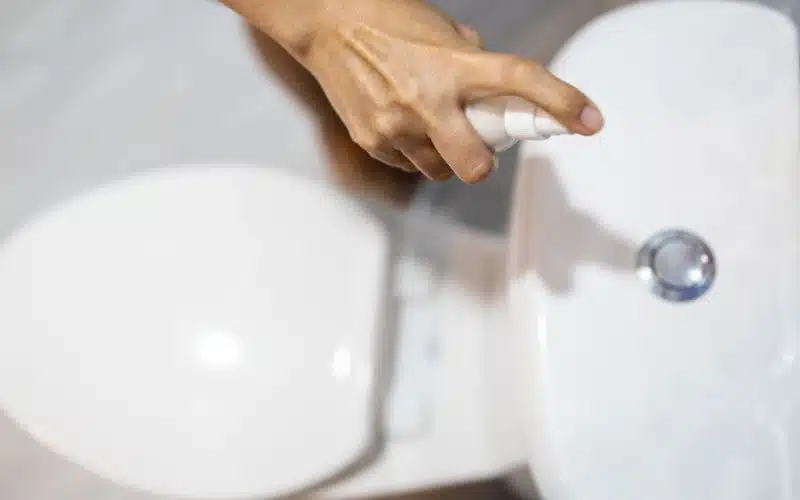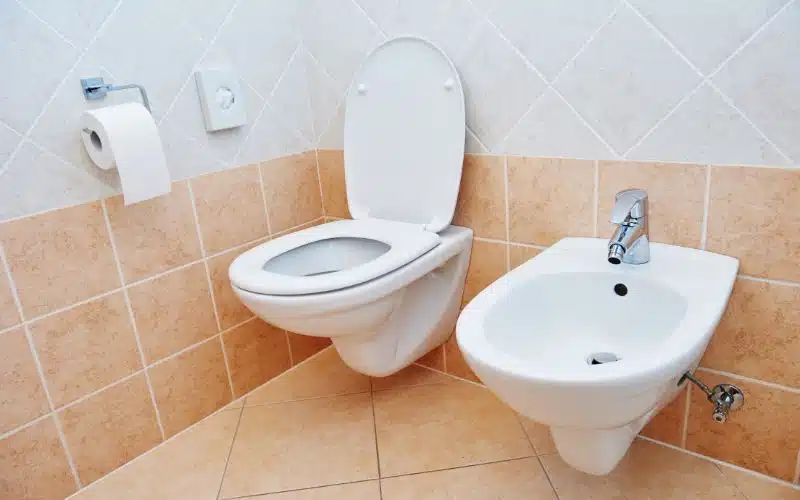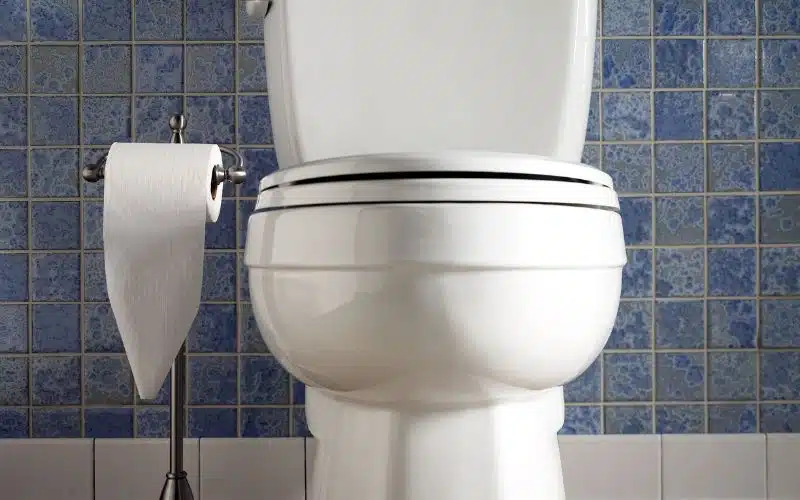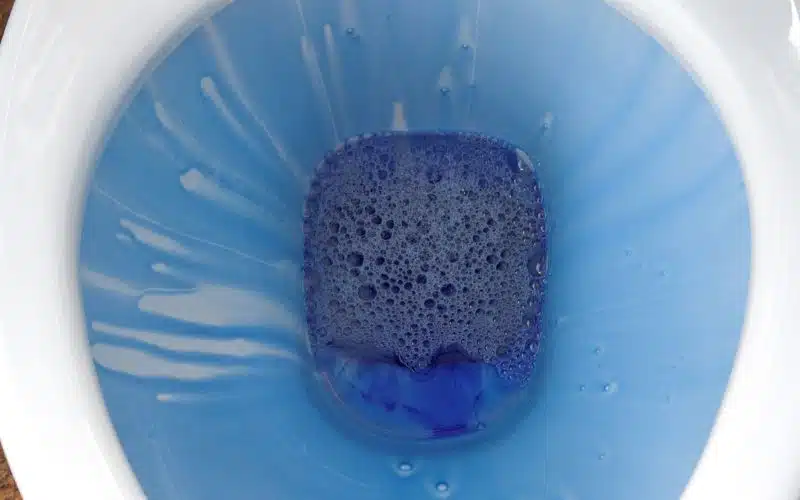Sewage pipes are prone to freezing during winter. Antifreeze prevents this. However, antifreeze solves various freezing problems, from regulating car radiator temperature to warming HVAC systems.
They come in various types and chemical compositions. Some antifreeze is good for toilets, while some are toxic and may cause serious health implications. Hence the question: Is it safe to put antifreeze in toilets?
It’s safe to put antifreeze in toilets. However, they must be special, non-toxic antifreeze–what is known as “Plumber’s Antifreeze.” The reason is that regular antifreeze contains ethylene glycol, which is toxic and causes damage to sewage pipelines. Plumber’s antifreeze, on the other hand, contains propylene glycol, which is safe for use.
Can You Put Antifreeze In a Toilet?

You can put Antifreeze in your toilet. However, it would be best if you only used Plumber’s Antifreeze.
It is non-toxic and safe for use in toilets. A plumber’s antifreeze is not the same as the antifreeze used in a car’s radiator.
Before using antifreeze in your home sewage system, search out the key ingredients in the antifreeze you plan on using.
If it contains ethylene glycol, it is not suitable for your toilet. However, if your antifreeze contains propylene glycol, it is safe to use.
Propylene glycol is used for Recreational Vehicles (RVs) and is safe for home plumbing systems. Propylene glycol is advertised as either Plumber’s Antifreeze or RV Antifreeze.
Before putting Plumber’s Antifreeze, you should follow some proper guidelines below.
- Do not put Plumber’s Antifreeze into the supply lines of your house. Plumber’s antifreeze is meant for use in continuous water lines like your sewage lines. Do not put antifreeze anywhere close to your drinking water lines. It is extremely dangerous and can cause severe health problems.
- Pour out only a small amount of antifreeze down the drain of your toilet lines. At least, just enough for it to get into the traps of your sewage line.
- Do not flush or run water immediately after pouring the antifreeze into the sewage lines. Doing so will only wash away the already applied antifreeze. It is best to turn off the house’s plumbing system, so no one accidentally puts on a tap or runs water immediately after you’ve poured down the antifreeze.
- Plumbing antifreeze is for house sewage lines. Remember not to put antifreeze into your water supply lines or close to drinking water lines. Also, do not put antifreeze into your water heater.
Below is a list of good quality Plumber’s Antifreeze you can pour into your toilets or sewage lines.
Why Do People Put Antifreeze In Toilets?
Antifreeze prevents your toilet and sewage lines from freezing during winter. Frozen pipelines clog water flow within the house and are a serious issue when not paid attention to early enough.
You risk bursting pipes during winter if you do not regularly apply antifreeze to your water lines. It, in turn, would cost you expenses to repair the damages and or buy new pipes.
Frozen pipes can also trigger problems with the home electrical wiring. It may eventually lead to electrocution or electrical failure around the house.
Aside from being unable to access water for a while, you will also not be able to use your toilets because the top layer of water film inside the cistern may have frozen completely.
Plumbing Antifreeze provides burst protection down to -58 degrees Fahrenheit when used undiluted.
Plumbing Antifreeze is specially formulated to prevent freezing and freeze damage to the house plumbing system, especially septic systems and drains.
Antifreeze is also used in swimming pool filtration and heating systems, boats, and RVs.
To successfully apply antifreeze to your toilet, follow these steps.
#1. Step 1:
First, flush your toilet to drain all the water in the cistern tank.
#2. Step 2:
Pour in a small amount of Plumbing Antifreeze (Propylene glycol) undiluted into the tank.
#3. Step 3:
Mix the antifreeze with the little water inside the cistern tank and leave for an hour before flushing.
What Should You Put In Your Toilet Tank To Winterize It?
It would be best to put a Plumber’s Antifreeze into your toilet water tank to winterize it.
To do this properly, you must consider the two main parts of your toilet that connect to your plumbing and ensure the antifreeze works effectively.
These two parts are the tank and the bowl. The tank is where water stays before flushing. The tank can turn on and off, which makes it a key factor when winterizing your toilets.
Below are the steps you must follow to winterize your toilet:
#1. Empty the Toilet Tank
The empty toilet tank and switch the valve off to prevent water from rushing back into the tank.
After emptying the tank and switching off the valve, remove the top cover of the toilet tank and rest it on the floor.
If you notice some water remaining inside the toilet tank, keep flushing it out until the tank is empty; then, use a dry rag or sponge to soak out the last residue of water.
#2. Empty the Toilet Bowl
Empty the toilet bowl by disconnecting the water supply underneath the toilet tank, directly connected to the bowl. Doing this will allow water to flow out from the bowl.
#3. Pour Plumbing Antifreeze
For this stage, you may consider wearing protective glasses so the undiluted chemical doesn’t accidentally splash into your naked eyes.
Ensure the antifreeze you use is non-toxic and does not contain ethylene glycol. Slowly pour out the antifreeze into the toilet tank.
Hold down the flush lever to allow the antifreeze to spread to other parts of the water cistern.
Winterizing your toilets prevents them from freezing, especially when you will be away from home for long periods. This way, your plumbing system will still function when you’re back.
How Much Antifreeze Should I Put In a Toilet?
The amount of antifreeze you can safely pour into a toilet depends on how diluted the antifreeze is.
If you decide to pour the antifreeze undiluted, you will need to pour enough to replace the water in the traps. At least half a liter is enough for your toilet tank.
This amount will successfully keep your tank protected all winter. Sinks and tubs require different size measurements.
At least a cup full is sufficient enough for sinks and tubs. Ensure the antifreeze goes down the drain and wets the traps completely.
If you intend to dilute your Plumber Antifreeze with water, you may have to follow a different size measurement than the above.
What Are Other Ways To Keep Toilets From Freezing?
There are several ways to keep your toilet from freezing other than using a Plumber’s Antifreeze.
However, it is important to note that winterizing your toilet with antifreeze is the best option for preventing your sewage lines from freezing during the winter.
Other ways to keep your toilets from freezing include;
#1. Pipe Insulation
Exposed pipes are very susceptible to freezing. Keeping your pipes well insulated will prevent them from freezing up. The more insulated your pipes are, the better they can withstand freezing conditions.
#2. Wrap Pipes With Heat Cables
Wrapping your pipes with thermostatically controlled heat cables can prevent your toilets from freezing. You can wrap your pipes from the interior or the exterior.
Ensure to follow all the manufacturer’s guidelines before installing the heat cables. If you encounter difficulties while installing the heat cables, you can contact a professional plumber to do it for you.
Summary
Only Plumber’s Antifreeze is safe for toilets. Antifreeze containing ethylene glycol is toxic and harmful to house water lines.
Do not pour Plumbing antifreeze anywhere close to your drinking water lines. The repercussions are fatal.
Give the antifreeze some time to soak into the pipes before flushing. Always winterize your toilets before traveling for a long period during the winter months.
- 3 Reasons For Grey Sediment In Your Toilet Bowl!
- Are Padded Toilet Seats Sanitary Or Unsanitary? (Must Know)
- Can Toilet Seat Covers Be Flushed? (Read This First)
- Can You Flush Alcohol Down the Toilet? (Read Before)
- Can You Put Soap In The Toilet? (Read This First)
- Can You Replace A Toilet Tank? (Must Read To Do So)
